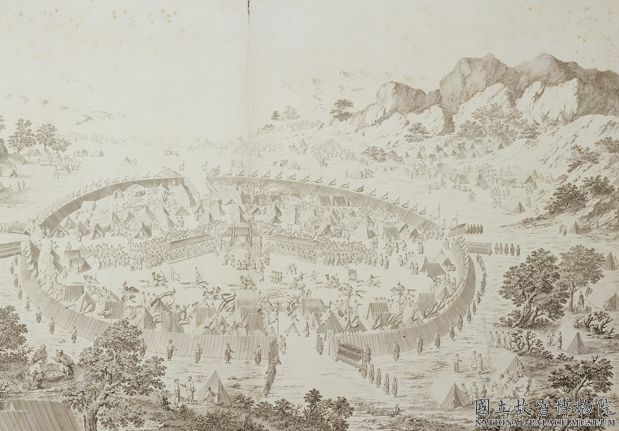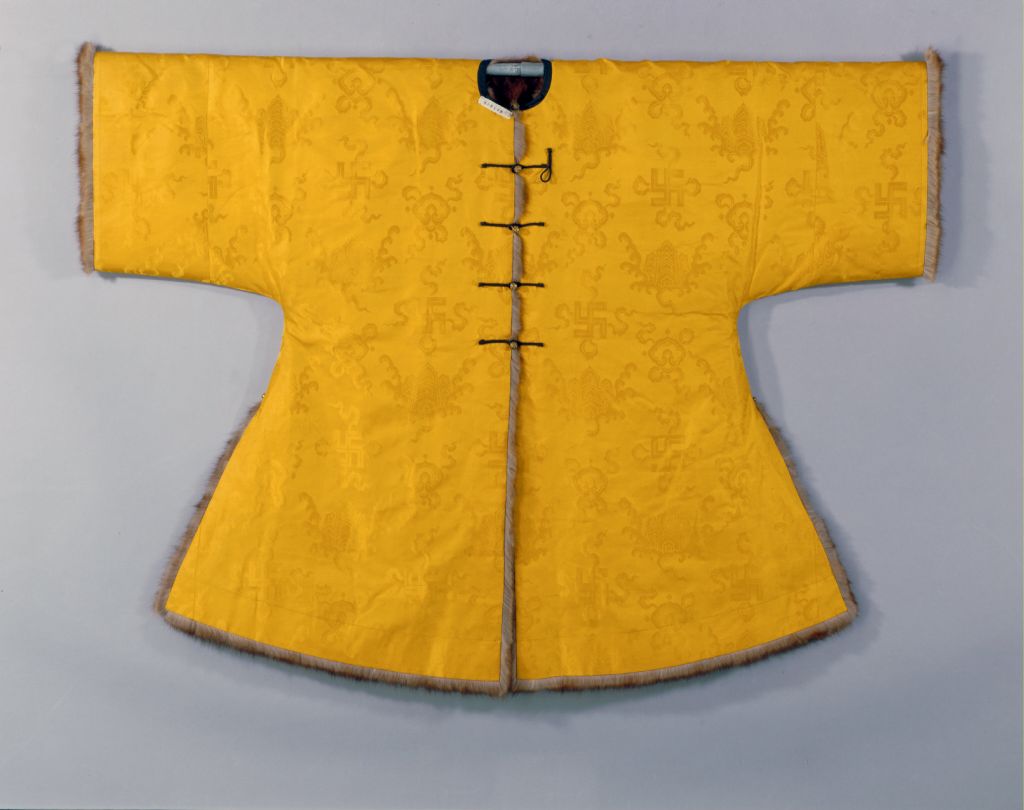[Yellow Pear Wood Inlaid Dyed Tooth Wood Carved Landscape Painting Throne]
In the mid Qing Dynasty, it was 98 centimeters high, 96 centimeters long, and 69 centimeters wide
The throne is of a three screen type, with its height lowered from the top of the backrest to the armrest on both sides. The screen center of the backrest and the armrest on both sides is painted with azure blue. On the painted ground, a picture of a wooden landscape pavilion is inlaid. On the screen in the center of the backrest, there are towering mountains, white clouds banded around, and double eaved pavilions, which are shaded by skillful craftsmen using axes and chisels as brushes, good wood as rice paper, and ivory as pigments, perfectly displaying a three-dimensional landscape scroll. The back of the throne and the frame of the armrests on both sides are carved with a looped clasp. The seat surface is made of nanmu wood with a waistband underneath. The four legs are straight down, forming an inverted looped foot at the foot end, and the foot is stepped on to support the mud. There is also a yellow pear pedal attached to the throne. This set of screen throne is made of thick and massive materials, and is inlaid with various precious materials. Its craftsmanship is exquisite, highlighting the craftsmanship of the Qing Palace furniture. Among the furniture handed down from the Qing Dynasty palace, there are many pieces of furniture inlaid with hundreds of treasures, most of which are made of red sandalwood, while the yellow pear furniture in the palace uses inlay techniques, which is less than red sandalwood. This set of screen throne is made of precious yellow pear wood, inlaid with precious materials such as yellow pear wood, ivory, and other precious materials. Regardless of cost, the production method is exquisite and vivid. It can be regarded as a fine piece of furniture during the Qianlong period, originally installed in the Fuwang Pavilion. Located in the last courtyard of Ningshou Palace Garden, Fuwang Pavilion was built in the 37th year of Qianlong’s reign (1772) in imitation of the Yanchun Pavilion in Jianfu Palace Garden. A square pavilion with three internal floors, five lower floors with enclosed galleries, a hidden floor in the middle, and three upper floors. The means of separating spaces are extremely complex and are known as “labyrinths”. During the reign of Qianlong, on the 21st day of the twelfth lunar month of each year, the emperor presented meals to princes and ministers here. The Fuwang Pavilion is also the tallest building in the Ningshou Palace Garden. Climbing on it, you can see the beautiful scenery inside and outside the Forbidden City. Emperor Jiaqing once boarded this pavilion, and there was a poem chanting “Yongfu Wangge”. Through this set of yellow pear inlaid wooden throne screens, we can imagine the scene of Wenxi, where Emperor Gaozong Hongli of the Qing Dynasty was seated in the Fuwang Pavilion in the midst of the snowy winter, sitting on the beautifully decorated yellow pear inlaid wooden throne, giving food to the group of ministers and making music alone, which was not as good as the music of the masses, and the monarchs and ministers were in harmony and harmonious harmony
![图片[1]-Yellow Pear Wood Inlaid Dyed Teeth Wood Carved Landscape Map Throne-China Archive](https://chinaarchive.net/Warring States period/furniture/20567[1024].jpg)

![[Qing Dynasty] British female painter—Elizabeth Keith, using woodblock prints to record China from the late Qing Dynasty to the early Republic of China—1915-China Archive](https://chinaarchive.net/wp-content/uploads/2022/11/image-191x300.png)



